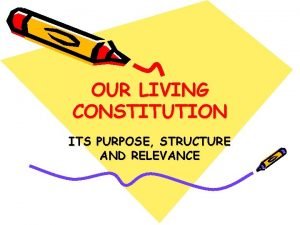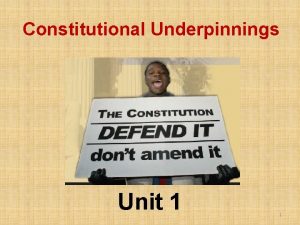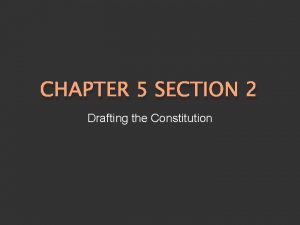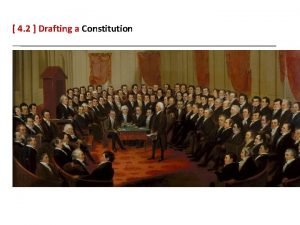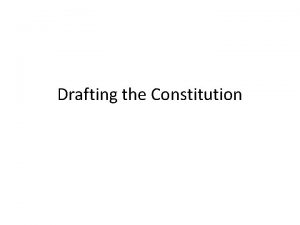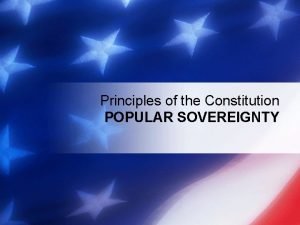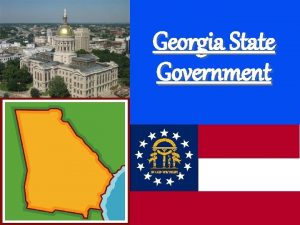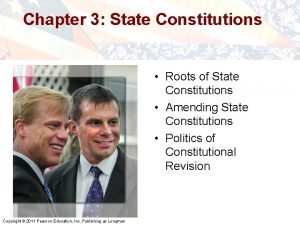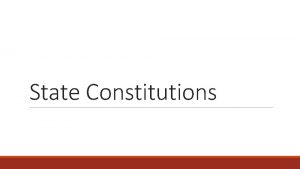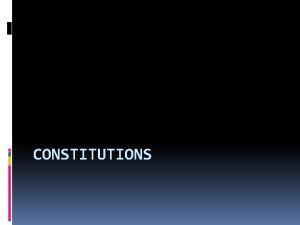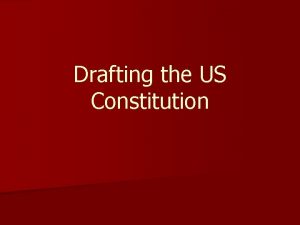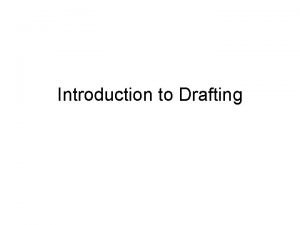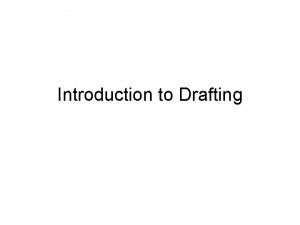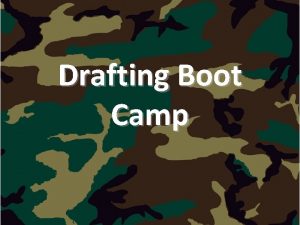Drafting the Constitution State Constitutions Induction of Popular











- Slides: 11

Drafting the Constitution

State Constitutions Induction of *Popular Sovereignty Idea that people are the highest authority Executive branch (Governor) lost power, Legislative branch (Assemblies) gained PA Constitution 1776 Abolished landholding perquisite for voting Became “unicameral” body Governor’s office eliminated, rule by “the people” SC Constitution 1778 Requirements for voting and political office depended on property possession Only financially independent individuals were believed to have the self-control to make good decisions MA Constitution 1780 Rejected proposed cons. 1778 Special Convention of 1780 of specially elected representatives Popular Rule

Articles of Confederation Continental Congress continued as general political body Loose confederation Articles of Confederation(1777): rules for how they were organized Ratified by all states 1781 Cooperation or war Congress Control over diplomacy, printing money, resolving conflict btw states, coordinating war efforts One-state, one-vote Bankruptcy 1780 Robert Morris proposed the Bank of North America

Evaluating Congress Failure of Congress, a result of its limited fiscal power (could not impose taxes on the states) Congress in War Raised the Continental Army Treaty of Alliance with France 1778 Procured military and financial support from France Peace Treaty 1783 Won American’s fishing rights in Atlantic Ocean, which British Navy controlled Western lands south of the Great Lakes New Land Asserted ownership of western lands, sold the land then used the money for settlement New sovereign states

The Economic Crisis of the 1780 s Life is a struggle Trade Disrupted! Most American ships were destroyed by the far bigger British Navy. Restricted exports to Britain/No trade with the sugar colonies British goods sold cheaper than American goods Debt for the war effort fueled rapid inflation

Oh no! We made our own country!! What do we do next? ? The Critical Period Federal Constitution- new plan for the nation Philadelphia 1787 New set of rules for organizing national government Called for strong central gov’t Ratification: the people deciding whether or not to accept

Shays’ Rebellion Central and western Massachusetts suffered from economic crisis the most Farmers had super high debt Pro-debtors law (forgiving debt and printing more money) was not adopted by MA Sheriffs seized farms and those who couldn’t pay debt were imprisoned Demonstrated post. Revolutionary conflict

Shays’ Rebellion Daniel Shays Former captain, Continental Army Resistance reflected Revolution Rebels closed courts by force, Fall 1786 James Bowdoin Governor of Massachusetts Organized military force to confront rebels Crushed the rebellion Came under leadership of Daniel Shays Discontent was still widespread throughout the state, CT, NY and PA. Shaysites: American heroes or dangerous rebels Not re-elected for Governor

Response to the Critical Period Virginia Legislature Convention 1786 Congress revised Articles of Confederation, January 1787 Philadephia Convention 55 delegates from 12 states; including Benjamin Franklin, George Washington, Robert Morris, James Madison, Alexander Hamilton Did not reflect the full range of American society Aimed to created a National Government, to deal with major problems

The Tough Issues George Washington elected presiding officer of the Convention No public access for Convention’s discussions New national frame work James Madison’s Virginia Plan Strong central government with three distinctive elements 1. National Supremacy above state sovereignty 2. Central Gov’t would have a close relationship with the people 3. Central Gov’t made of 3 branches: Bicameral Legislature, an Executive and a Judiciary Small states’ New Jersey Plan Unicameral legislature One vote per state Virginia Plan chosen as basis for further discussion, needed a new constitutional structure

Constitution Through Compromise Representation remained the core issue Upper House/Senate: reflect the importance of state sovereignty Two representatives from each state regardless of size Lower House/House of Representatives Number of representatives determined by population State Legislatures Electoral College George Mason, of Virginia, proposes abolishment of slavery SC and GA argue furiously against this Fugitive Clause 3/5 Compromise
 State and federal constitutions
State and federal constitutions What are the three levels of government
What are the three levels of government State and federal constitutions
State and federal constitutions Chapter 5 section 2 drafting the constitution
Chapter 5 section 2 drafting the constitution Drafting of the constitution
Drafting of the constitution Shays rebellion summary
Shays rebellion summary Texas constitution vs u.s. constitution venn diagram
Texas constitution vs u.s. constitution venn diagram Nc constitution vs us constitution
Nc constitution vs us constitution Constitution what is constitution
Constitution what is constitution The constitution lesson 1 principles of the constitution
The constitution lesson 1 principles of the constitution Principle of popular sovereignty
Principle of popular sovereignty How many constitutions has georgia had
How many constitutions has georgia had
